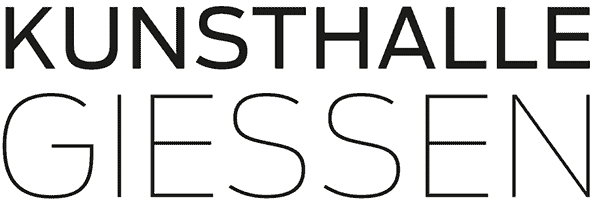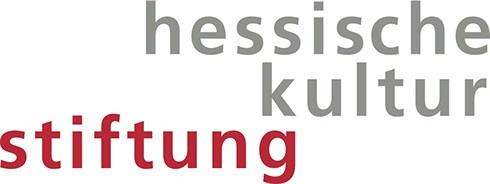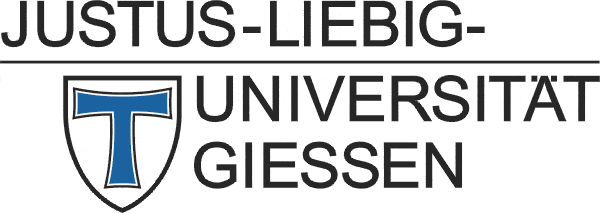
Heiner Goebbels
Landschaftsstücke/Landscape Plays
03.06. – 19.08.2018
Sound and Video Installation at Kunsthalle Gießen
Opening reception on June 2, 2018 at 6 p.m., Hermann-Levi-Saal at City Hall
Curated by Dr. Nadia Ismail
Collaboration René Liebert, Assistence Niels Wehr
Opening reception on June 2, 2018 at 6 p.m., Hermann-Levi-Saal at City Hall
Curated by Dr. Nadia Ismail
Collaboration René Liebert, Assistence Niels Wehr
In the solo exhibition Landschaftsstücke / Landscape Plays, Frankfurt artist Heiner Goebbels brings together the two media—sound and video installation—in a new format. There are five large-format screens displaying video works, some of which are synchronous. The sound, however, is interwoven, with audio related to one video emanating from another screen. In this striking manner, hearing is brought to the fore—as the acoustic experience of a complex sound composition made up of voices, noises and music.
Heiner Goebbels draws upon his expertise in composition to invert the disruptive effect that results when works with sound elements are displayed near one another in museums and galleries. The result is an aesthetic harmony arising from the most disparate of images, and the viewer may now concentrate on those that interest him or her the most.
The title of the solo exhibition Landschaftsstücke / Landscape Plays is a play on the proximity between contemporary performing arts and visual art, which is so characteristic of Heiner Goebbels world-renowned musical theater pieces.
The term Landscape Plays itself comes from the American author Gertrude Stein, who used it to describe her pieces that circumvented linear narration and traditional structures in order to change the course of traditional theater, with emphasized representation. On stage, there is no consistent or message or plot. Rather, Stein insists on the separate reality of her texts, on the free play of words, forms, colors, movement, and meanings that render the viewer sovereign. Just as when viewing a landscape in nature or an image of a landscape, the viewer may decide where to focus his or her attention.
“In short I found that since the landscape was the thing, a play was a thing and I went on writing plays a great many plays. I felt that if a play was exactly like a landscape then there would be no difficulty about the emotion of the person looking on at the play being behind or ahead of the play because the landscape does not have to make acquaintance. You may have to make acquaintance with it, but it does not with you, it is there and so the play being written the relation between you at any time is so exactly that that it is of no importance unless you look at it. Well I did look at it and the result is in all the plays that I have printed as Operas and Plays.”
“The landscape has its formation and as after all a play has to have formation and be in relation one thing to the other thing and as the story is not the thing as any one is always telling something then the landscape not moving but being always in relation, the trees to the hills the hills to the fields the trees to each other any piece of it to any sky and then any detail to any other detail, the story is only of importance if you like to tell or like to hear a story but the relation is there anyway. And of that relation I wanted to make a play and I did, a great number of plays.”
„A landscape does not move nothing really moves in a landscape but things are there, and I put into the play the things that were there. Magpies are in the landscape that is they are in the sky of a landscape, they are black and white and they are in the sky of the landscape.”
Gertrude Stein: Plays, in: Lectures in America
From early in his career, this open definition of landscape has inspired Heiner Goebbels to create:
• the textual landscapes in his sound pieces, including the performative installation Maelstromsüdpol, with Heiner Müller and Erich Wonder, documenta VIII 1987
• scenic set designs and landscape images, as in his performance Landscape with Man being killed by a Snake (after Nicolas Poussin), documenta X 1997
• musical theater pieces and operas with the Ensemble Modern, including Landscape with Distant Relatives, Geneva, 2002
• and the performative installation Stifter’s Things, which revolves around the author and landscape painter Adalbert Stifter.
He further explores this theme in works such as Hashirigaki, 2000, which is based on texts from Gertrude Stein’s The Making of Americans, his staging of John Cage’s Europeras 1&2, and of De Materie, an opera by Louis Andriessen (Ruhrtriennale 2012 and 2014).
The exhibition Landschaftsstücke / Landscape Plays relates to these works as well.
Heiner Goebbels
Composer and director, born 1952, lives in Frankfurt/Main since 1972; graduated in sociology and music. Staged concerts, Radioworks, compositions for ensemble and orchestra (Surrogate Cities, 1994). Since the early 1990‘s music theatre works: Ou bien le débarquement désastreux (Paris, 1993), Black on White (Frankfurt, 1996), Max Black(Lausanne, 1998), Eislermaterial (München, 1998), Landscape with Distant Relatives (Geneva, 2002), Eraritjaritjaka (Lausanne, 2004), Songs of Wars I have seen (London, 2007) Stifters Dinge (Lausanne, 2007), I went to the house but did not enter (Edinburgh, 2008), When the Mountain changed its clothing (Bochum, 2012), mit einem Namen aus einem alten Buch(Gießen, 2018) i.a.
With all concerts and music theatre works numerous invitations to the most important music-, theatre- and artfestivals worldwide.
Sound- and videoinstallations: documenta 1982/ 1987/ 1997, Artangel London 2012, Musée d’art contemporain Lyon 2014, Albertinum Dresden 2016, New Space Moskau 2017.
CD produktions with ECM Records, anthology Komposition als Inszenierung (2002) and Aesthetics of Absence (2015). Numerous international radio-, theatre- and music-awards (Prix Italia, European Theatre Price, International Ibsen Award et al.). Composer-in-residence at Lucerne Festival, Artist-in-residence at Cornell University, Ithaca. Member of several Academies of Arts, Honorable Fellow of Dartington College of Arts and Central School of Speech and Drama, London; Fellow at Institute for Advanced Studies Berlin (2007/08). Honorable Doctorade of Birmingham City University and National Academy for Theatre and Film Arts, Sofia.
1999–2018 Professor at Institute for Applied Theatre Studies of Justus-Liebig-University Gießen, 2006–2018 President of Hessian Theatre Academie.
Artistic Director of Ruhrtriennale–International Festival of the Arts 2012–2014.
2018, he was appointed as first Georg Büchner Professor by the president of the Justus-Liebig-University.
www.heinergoebbels.com
Heiner Goebbels draws upon his expertise in composition to invert the disruptive effect that results when works with sound elements are displayed near one another in museums and galleries. The result is an aesthetic harmony arising from the most disparate of images, and the viewer may now concentrate on those that interest him or her the most.
The title of the solo exhibition Landschaftsstücke / Landscape Plays is a play on the proximity between contemporary performing arts and visual art, which is so characteristic of Heiner Goebbels world-renowned musical theater pieces.
The term Landscape Plays itself comes from the American author Gertrude Stein, who used it to describe her pieces that circumvented linear narration and traditional structures in order to change the course of traditional theater, with emphasized representation. On stage, there is no consistent or message or plot. Rather, Stein insists on the separate reality of her texts, on the free play of words, forms, colors, movement, and meanings that render the viewer sovereign. Just as when viewing a landscape in nature or an image of a landscape, the viewer may decide where to focus his or her attention.
“In short I found that since the landscape was the thing, a play was a thing and I went on writing plays a great many plays. I felt that if a play was exactly like a landscape then there would be no difficulty about the emotion of the person looking on at the play being behind or ahead of the play because the landscape does not have to make acquaintance. You may have to make acquaintance with it, but it does not with you, it is there and so the play being written the relation between you at any time is so exactly that that it is of no importance unless you look at it. Well I did look at it and the result is in all the plays that I have printed as Operas and Plays.”
“The landscape has its formation and as after all a play has to have formation and be in relation one thing to the other thing and as the story is not the thing as any one is always telling something then the landscape not moving but being always in relation, the trees to the hills the hills to the fields the trees to each other any piece of it to any sky and then any detail to any other detail, the story is only of importance if you like to tell or like to hear a story but the relation is there anyway. And of that relation I wanted to make a play and I did, a great number of plays.”
„A landscape does not move nothing really moves in a landscape but things are there, and I put into the play the things that were there. Magpies are in the landscape that is they are in the sky of a landscape, they are black and white and they are in the sky of the landscape.”
Gertrude Stein: Plays, in: Lectures in America
From early in his career, this open definition of landscape has inspired Heiner Goebbels to create:
• the textual landscapes in his sound pieces, including the performative installation Maelstromsüdpol, with Heiner Müller and Erich Wonder, documenta VIII 1987
• scenic set designs and landscape images, as in his performance Landscape with Man being killed by a Snake (after Nicolas Poussin), documenta X 1997
• musical theater pieces and operas with the Ensemble Modern, including Landscape with Distant Relatives, Geneva, 2002
• and the performative installation Stifter’s Things, which revolves around the author and landscape painter Adalbert Stifter.
He further explores this theme in works such as Hashirigaki, 2000, which is based on texts from Gertrude Stein’s The Making of Americans, his staging of John Cage’s Europeras 1&2, and of De Materie, an opera by Louis Andriessen (Ruhrtriennale 2012 and 2014).
The exhibition Landschaftsstücke / Landscape Plays relates to these works as well.
Heiner Goebbels
Composer and director, born 1952, lives in Frankfurt/Main since 1972; graduated in sociology and music. Staged concerts, Radioworks, compositions for ensemble and orchestra (Surrogate Cities, 1994). Since the early 1990‘s music theatre works: Ou bien le débarquement désastreux (Paris, 1993), Black on White (Frankfurt, 1996), Max Black(Lausanne, 1998), Eislermaterial (München, 1998), Landscape with Distant Relatives (Geneva, 2002), Eraritjaritjaka (Lausanne, 2004), Songs of Wars I have seen (London, 2007) Stifters Dinge (Lausanne, 2007), I went to the house but did not enter (Edinburgh, 2008), When the Mountain changed its clothing (Bochum, 2012), mit einem Namen aus einem alten Buch(Gießen, 2018) i.a.
With all concerts and music theatre works numerous invitations to the most important music-, theatre- and artfestivals worldwide.
Sound- and videoinstallations: documenta 1982/ 1987/ 1997, Artangel London 2012, Musée d’art contemporain Lyon 2014, Albertinum Dresden 2016, New Space Moskau 2017.
CD produktions with ECM Records, anthology Komposition als Inszenierung (2002) and Aesthetics of Absence (2015). Numerous international radio-, theatre- and music-awards (Prix Italia, European Theatre Price, International Ibsen Award et al.). Composer-in-residence at Lucerne Festival, Artist-in-residence at Cornell University, Ithaca. Member of several Academies of Arts, Honorable Fellow of Dartington College of Arts and Central School of Speech and Drama, London; Fellow at Institute for Advanced Studies Berlin (2007/08). Honorable Doctorade of Birmingham City University and National Academy for Theatre and Film Arts, Sofia.
1999–2018 Professor at Institute for Applied Theatre Studies of Justus-Liebig-University Gießen, 2006–2018 President of Hessian Theatre Academie.
Artistic Director of Ruhrtriennale–International Festival of the Arts 2012–2014.
2018, he was appointed as first Georg Büchner Professor by the president of the Justus-Liebig-University.
www.heinergoebbels.com
Opening
Saturday, June 2nd, 2018, 6 pm
Official greeting
Dietlind Grabe-Bolz
Mayor of the City of Giessen
Welcome address
Prof. Dr. Joybrato Mukherjee
President Justus-Liebig-University, Giessen
Introduction
Dr. Nadia Ismail
Director Kunsthalle Giessen
Heiner Goebbels
Official greeting
Dietlind Grabe-Bolz
Mayor of the City of Giessen
Welcome address
Prof. Dr. Joybrato Mukherjee
President Justus-Liebig-University, Giessen
Introduction
Dr. Nadia Ismail
Director Kunsthalle Giessen
Heiner Goebbels
Finissage
Sunday, August 19th, 2018, 11 am
Prof. Marcel Baumgartner im Gespräch mit Heiner Goebbels
Prof. Marcel Baumgartner im Gespräch mit Heiner Goebbels
Supported by
Hessische Kulturstiftung
Justus-Liebig-Universität Gießen
Verein Ehrenamt Gießen e. V.
Hessische Kulturstiftung
Justus-Liebig-Universität Gießen
Verein Ehrenamt Gießen e. V.

